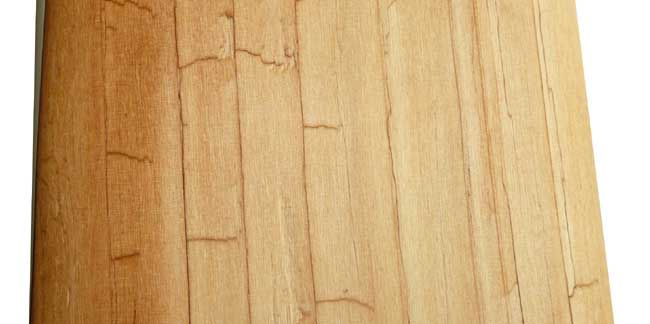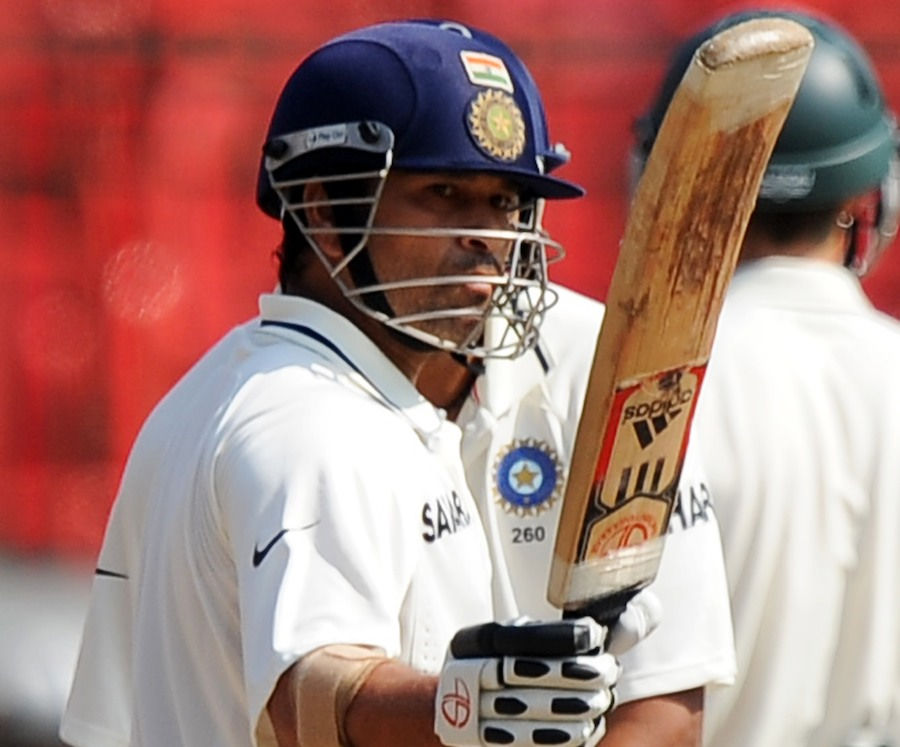
Bat Care
BAT MAINTENANCE AND REPAIR
As soon as the bat leaves the workshop, it will be subject to wear and tear. Just as car owners are expected to be responsible for oil, water and tyres, there is an expectation that players will maintain their bats to prevent the likelihood of severe damage by taking some responsibility to prevent damage and perform minor maintenance.
Before you use your bat, we do not recommend more than one very light coat of Bat Butter or linseed oil. When this is dry, apply a protective facing. Then begin the knocking in process.
KNOCKING IN
All bats should be knocked in, even those that have been made ready play, should be treated carefully to begin with. Knocking In Service at Bradbury Cricket is included during the crafting of each bat with 10 000 hits by a specialist machine. Putting a bat through a roller is not knocking it in, nor is it part of the knocking in process. Sport shops that use additional pressing through a roller are not knocking your bat in, rather changing the bat makers intentions for ultimate rebound.
Further knocking in is required to repare your bat for a long lasting future, the bat should be gradually knocked in with soft, old balls- with controlled hitting. Gradually progress to newer balls. Avoid bowling machine practice until the bat is well knocked in. If seam marks are visible, knocking in is not complete. An accurate time frame cannot be put on this process, however, the greater time spent on knocking in, the greater the likelihood of a longer lasting bat.
OILING
Linseed oil is the best suited for the conservation of wood. However, over use causes damage. Too much oil adds weight to the bat, swells the fibres resulting in the pressing being compromised and if raw linseed is used, prevents the adhesion of protective facing. Furthermore, should the blade require pva glue to repair damage, the excessive use of oil prevents the glue bonding effectively.
Oil is very effective at preventing moisture damage on the end grains exposed on the toe of the bat. A thin application 2 or 3 times a season would be very beneficial.
Bradbury Bat Butter is a linseed oil based gel that dries after 24 hours of application. It is used in the final finishing of making Bradbury cricket bats and its application is a vital stage of knocking in a bat at the workshop. It is a preferred alternative to raw linseed oil.
MOISTURE DAMAGE
Willow as a growing tree has a cell structure that supports aggressive uptake of moisture. Once the wood is made into a bat, this quality remains. Bats are pressed to achieve a rebound for playing the ball, if exposed to excessive moisture, the fibres swell and the pressing is compromised. When this occurs on the end grain of a toe, the uptake of water (and soil particles) swells the toe area and leaves a grey watermark after drying. The cell walls weaken and cracking occurs with impact from the ball and/or tapping the bat on the ground. A toe guard fitted or the application of Bull Shoe Glue, or Selley's Shoe Goo will go a long way towards protecting against severe water damage- though best action is to keep the toe dry.
Feathering is a term used when the toe shows the layers separating, like the pages of a book left slightly open. If your bat shows signs of feathering, you can gently pry open the layers, remove any loose particles and force pva glue into each area. Then clamp until the glue dries. An affective clamping of the soft willow can be a grip cut into 2 or 3 cm bands, placed around the repair area. This technique works for superficial surface and edge cracks too.
To prevent further toe damage, apply shoe repair glue, or a toe guard. You can apply a thin layer of bat butter to exposed willow after 24 hours of the pva glue drying to assist in repelling moisture.
BROKEN HANDLE
The handle can be replaced by experienced craftsman, this does not effect the performance of the bat and does not warrant a full bat replacement.
GRIP CARE
Grips are made from a rubber latex combination. Rubber naturally perishes over time despite use. It is not unusual to replace the grip a few times during a season, depending on the level of wear. To replace a grip, a gripping cone is required. An alternative is a technique using a polystyrene bag over the handle.
The application of XT Grip Tape , a silicon based product that is wound around the top and bottom of a handle, underneath the grip which can minimise the grip from riding up the handle. If you find a grip slips or moves in your grasp, the XT Tape can be cut into thin strips and applied the full length of the handle and the grip slipping will be prevented.
Grips and XT tape can be applied at the Bradbury workshop at no extra cost.
REPLACING THE FACING
After significant use, you may wish to replace the facing. This is best done by softening the adhesive layer with a hair dryer and peeling back the facing slowly and across the grain. That is, from edge to edge. If you pull the facing along the grain it is likely to lift the willow off the face. Repair any cracks with PVA glue and gently sand. Apply a new facing.
CRICKET BALLS
The most severe damage to the blade of a bat is caused by cheap, hard cricket balls. The core of a quality cricket ball is made from cork and rubber compound, wound with woollen twine. Good quality cricket bats made from English willow are designed to withstand impact from good quality cricket balls.
Cheap balls are sometimes void of the wool twine (a softening agent), and the compounded centres can include metal scraps.














If your bat looks like any of the above pictures, the damage to your bat is normal and acceptable as normal wear and tear.
Irrespective of make or finish of a bat, superficial face and edge marks will almost certainly appear, together with indentations or bruising of the willow. In these circumstances there is no need to worry as the durability and performance of the bat will be unaffected.
Bats returned to us by worried and sometimes ill-advised customers, in a similar condition to the pictures, are not complaints due to manufacture but merely reactions of willow.
THE DAMAGE TO YOUR BAT CAN BE ADDRESSED WITH PVA GLUE AND BAT TAPE.
THIS WILL NOT AFFECT THE PERFORMANCE OF THE BAT.
If you do believe your bat is badly damaged and in need of remair, you will need to return the bat, with true proof of purchase details, to the shop where you made the purchase. Staff will assess and advise accordingly. If needed, the bat may be returned to Bradbury for assessment.
We also offer refurbishments, gripping, labelling, toe guard fitting services and more.
BLADE CRACKS
Willow is by its very nature, a soft wood, that when pressed, provides the rebound qualities required to strike the ball. Some small cracks are bound to occur on the bat, due to wear and tear, these will not affect its performance. If the cracks are wide enough to receive pva glue, remove any loose dirt, force in the pva and then clamp until the glue dries. Once the glue is dry, lightly sand and if desired, apply a facing, of either fibre reinforced tape, or clear blade tape. This is a prime example where modern technology provides an exceptional solution to an old problem.
SHOULDER CRACKS & TOE SPLITS
A cricket bat endures torsion through the force of the ball hitting a moving bat. The stress is mainly borne through the handle as it twists when the blade and ball impact. When this impact is off centre, the bat experiences greater levels of torsion. The force is greatest with faster bowling or quicker bat speed. Repeated impact builds stress through the fibres which can result in hairline fractures through the shoulder of the bat. When detected early, these fractures can be glued or strengthened through the application of fibreglass tape. If the cracks become severe, the bat may need binding. The insertion of dowels to the effected area could also be required.
CONSIDERATION TO USE
Bat use is not measured by the amount of runs scored in a game. It should not actually be measured by time. Every cricketer will use a bat differently over the course of a season and the amount of use includes practice, as well as time spent out in the middle during a game.
Consideration should also be given to how you use the bat. How discrete you are with shot selection greatly influences the level of wear and tear on your bat.
A guarantee is honoured against the workmanship and materials, when the bat is used in a proper and responsible manner, within the first season (this is not a 12 month period). Fair wear and tear is not included. Superficial surface cracks, water damage to toes causing cracking, yorkers and edges will cause additional damage that is not covered under warranty. Furthermore, failure to prepare and maintain your bat will influence the level or repair available under warranty.
Proof of purchase (receipt) must be provided to the original place of purchase before any warranty work is considered.
All warranty claims MUST be returned to the place of purchase, with receipt of original purchase. It is here where the first assessment will be made.
Services
(scroll down for information about bat care)
Bradbury have decades of experience working with cricket bats. We offer repair, refurbishment and maintenence services. At Bradbury these services are completed quickly and with superior quality.
Knocking-in
10 000 hits in 60 minutes
Rehandle
48 hours
Repairs
Toe, shoulder, blade etc.
Refurbishment
Complete clean-up of the exterior of your bat
Weight reduction
A lighter bat without comprimising its structural integrity or aethetics
Contact the batmakers to discuss the full range of services we offer.

XT tape
When applied keeps the grip in place.
Available in store only at 7a Forsyth St, O'Connor WA



